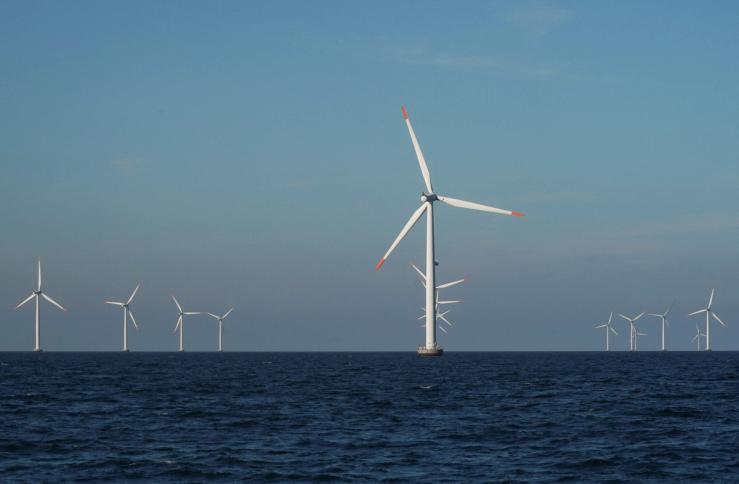The News
A pair of multibillion-dollar deals for new offshore wind projects outside the US point to a rebound for an industry that has spent the last few years on life support.
Late last week, Danish developer Ørsted raised nearly $3 billion from a group of two dozen banks and export credit agencies to finish a 600-megawatt offshore wind farm in Taiwan. Meanwhile, Spain’s Iberdrola and the United Arab Emirates’ Masdar agreed a $5.2 billion deal for a new offshore wind project in the UK, which the companies said is the largest single offshore wind deal of the decade. Globally, projects totalling more than 11 gigawatts of offshore wind capacity locked in financing in the first half of 2025, more than in all of 2024, according to BloombergNEF.
The exception: the US, where the Trump administration’s tax policies look likely to darken the industry’s prospects.
Tim’s view
Between data centers, EVs, and all the other growing demands on global electric grids, there’s no shortage of demand for power from offshore wind. But the industry has suffered from a timing problem. The projects can pack a major power punch, but they’re typically more expensive and take longer to build than onshore wind or solar. In the time between a project securing a buyer for its power and selling its first electrons, inflation can push up construction costs enough to undercut the project’s profitability. That issue caused the industry to freeze up starting in 2023, leading to a rash of cancelled projects, cratered share prices, and layoffs.
The new Ørsted and Iberdrola projects cleared the finance hurdle because of two key factors, said Finlay Clark, principal analyst for power and renewables at research firm Wood Mackenzie. For one, both involve expanding nearby wind farms that are already operational, eliminating some costs and risks related to preliminary engineering design that brand-new projects would bring. And both rely on specialized long-term power sales contracts that blunt the inflation risk. In Ørsted’s case, a deal to sell some of the power from the wind farm to the chip manufacturer TSMC is backed by a government-set feed-in tariff, giving the project a secure, long-term source of revenue. Ørsted also plans to sell its equity stake in the project once it becomes operational, freeing up capital for subsequent plans. Iberdrola’s deal is backed by a so-called “contract for difference” with the UK government, in which the government covers the difference if the market power price falls below a preset level. “These transactions are crucial in keeping the capital-recycling flywheel turning,” Clark said.
The upshot is that for those who want the electrons badly enough, there are ways to make offshore wind economical without relying on tax subsidies. And those deals can be lucrative for their developers: After a period of belt-tightening, both Ørsted and Iberdrola saw a substantial increase in profit in the first half of this year based to a large extent on other recent offshore wind projects that are starting to pay off.
Room for Disagreement
Greenfield offshore wind projects, which have more inherent engineering risk and higher costs, continue to “stand politely on the sidelines,” BloombergNEF senior analyst Atin Jain said. Supply chain constraints are also pushing back delivery dates, he said, meaning that although more offshore wind growth is on the horizon, it will take longer to materialize than originally thought. Supply chain bottlenecks were one reason Ørsted canceled a different UK offshore wind farm this year. BloombergNEF this year reduced its 2030 global offshore wind capacity to 218 gigawatts, 7% below its previous forecast.
The View From the US
In the US, the picture is grimmer: Without contracts for difference or a federal feed-in tariff, projects rely on tax credits. And unlike solar or onshore wind farms, which can still eke out a competitive edge without tax support, US offshore wind stands no chance of being affordable without the credits. Because these forms of support were curtailed in the One Big Beautiful Bill Act signed by US President Donald Trump this month — and seem likely to be cut even further by an executive order Trump issued last week — it could be years before new offshore wind projects materialize in the US.
Notable
- Congressional Democrats are planning to pitch midterm election voters on a message that Trump and his Republican allies are responsible for rising power prices. Cutting tax breaks for wind and solar projects will make Republicans “the party of electricity shortages,” Sen. Brian Schatz (D-Hawaii) told Politico.


